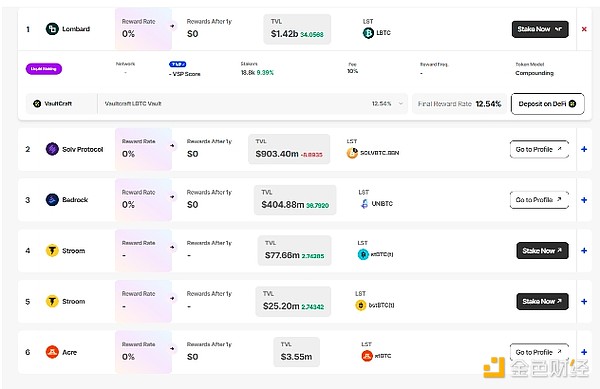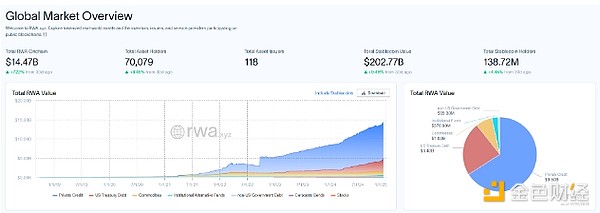Author: Alex O'Donnell, CoinTelegraph; Translator: Tao Zhu, Jinse Finance
Several industry executives point out that with the staking of Bit, the tokenization of real-world assets (RWA) and the catalytic application of proxy artificial intelligence, decentralized finance (DeFi) will reach a turning point in 2025.
In 2024, as investors pour over $100 billion into spot Bit ETFs, the Bit price will break through $100,000 for the first time.
"The historical high of Bit will spark new interest in cryptocurrencies from institutions and regulators, and will revive the entire cryptocurrency industry in 2025," said Dean Tribble, CEO of the Layer 1 network Agoric Systems.
According to data from defillama, in December, the total locked value (TVL) in DeFi protocols reached $130 billion, close to the historical high of about $175 billion in the ecosystem in 2021. Industry executives expect this upward trend to continue next year.
"By 2025, DeFi infrastructure and blue-chip protocols like Aave, Maple, and Maker will have been operating for more than four years," said Jacob Phillips, co-founder and chief strategy officer of the Bit staking protocol Lombard.
"These platforms will become a reliable place for institutions and new users to use Bit," Phillips said.

Source: defillama
Bit Staking
The emerging Layer 2 (L2) expansion networks and DeFi protocol ecosystem of Bit are creating unprecedented opportunities for investors to earn returns from Bit.
"Bit DeFi currently accounts for 0.1% of its total asset value. This is a 300-fold opportunity to develop DeFi on Bit," said Alexei Zamyatin, co-founder and CEO of Build on Bit, adding:
"We have spoken to dozens of large Bit DeFi users and funds who are eager to use their Bit assets to earn yields."
Bit L2s like Babylon and CoreChain pay fees to stakers to secure their networks by locking Bit as collateral.
Currently, liquid staking tokens (LST) representing staked Bit claims are surging. According to data from stakingrewards.com, as of December 19, the total locked value (TVL) of Bit LST reached $2.5 billion.
Matt Hougan, research chief at asset manager Bitwise, believes that by 2025, a Bit staking ETF may also gain attention.
"The demand for Bit yields is huge. Whether it will become an ETF structure in the US, I'm not sure, but in Europe, it certainly will," Hougan said.

Source: Stakingrewards.com
RWA Tokenization
In August, Colin Butler, global institutional capital chief at Polygon, pointed out that tokenized real-world assets (RWA) - digital tokens representing claims on any asset from US Treasuries to art - is a $30 trillion market opportunity globally.
According to data from RWA.xyz, they have already accumulated about $14 billion in TVL. Tokenized US Treasury bills with yields are particularly popular, with TVL exceeding $3 billion.
"Tokenizing real-world assets like real estate and carbon credits will unlock unprecedented liquidity, while advances in payments will further simplify cross-border transfers," said Raj Brahmbhatt, CEO of the Web3 settlement platform Zeebu.
Even the US Treasury has praised the potential of tokenization in improving liquidity and reducing "operational and settlement frictions".
Brahmbhatt said: "In the US, with the victory of (President-elect Donald) Trump, I am very optimistic that the US will become the global leader in this field by the end of this year."

Source: RWA.xyz
Proxy AI
According to CoinGecko, in 2024, the total market capitalization of tokens related to proxy artificial intelligence (autonomous machines pursuing complex goals) will reach nearly $10 billion.
Analysts predict that the fusion of artificial intelligence and blockchain technology will transform Web3, creating a future where autonomous AI agents build decentralized applications and transact with human users.
J.D. Seraphine, CEO of the AI protocol Raiinmaker, noted that proxy AI "has been proven to be core to the industry's future".
Seraphine said that by 2025, "AI agents are expected to play a more important role in decentralized communities".
Hougan said the potential areas for AI agents are almost limitless, and added:
"If you don't know exactly what's going to happen, that's fine, as long as you know that what's happening is really potentially important, and you want to get exposure to it."







